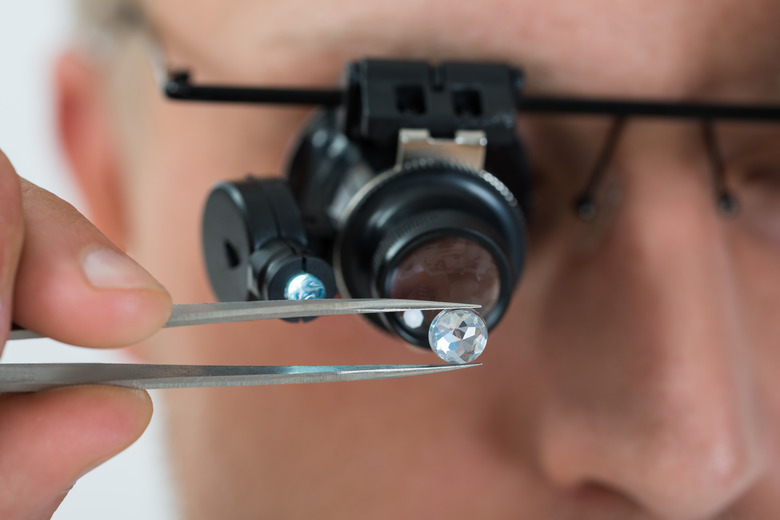The Differences In Covalent Crystals & Molecular Crystals
Crystalline solids contain atoms or molecules in a lattice display. Covalent crystals, also known as network solids, and molecular crystals represent two types of crystalline solids. Each solid exhibits different properties but there is only one difference in their structure. That one difference accounts for the different properties of the crystalline solids.
Covalent Bonding
Covalent Bonding
Covalent crystals exhibit covalent bonding; the principle that each atom on the lattice is covalently bonded to every other atom. Covalent bonding means the atoms have a strong attraction toward one another and are held in place by that attraction. Network solids means the atoms form a network with each atom connected to four other atoms. This bonding in effect creates one large molecule that is tightly packed together. This characteristic defines covalent crystals and makes them structurally different from molecular crystals.
Molecular Bonding
Molecular Bonding
Molecular crystals contain either atoms or molecules, depending upon the type of crystal, at each lattice site. They do not have covalent bonding; the attraction is weak between the atoms or molecules. No chemical bonds exist as in covalent crystals; electrostatic forces between the atoms or molecules hold the molecular crystal together. This difference causes molecular crystals to be loosely held together and easily pulled apart.
Examples
Examples
Examples of covalent crystals include diamonds, quartz and silicon carbide. All of these covalent crystals contain atoms that are tightly packed and difficult to separate. Their structure varies widely from the atoms in molecular crystals such as water and carbon dioxide which are easily separated.
Melting Point
Melting Point
The differences in structure between covalent crystals and molecular crystals cause the melting points of each type of crystal to differ. Covalent crystals have high melting points while molecular crystals have low melting points.
Cite This Article
MLA
Alley, Robert. "The Differences In Covalent Crystals & Molecular Crystals" sciencing.com, https://www.sciencing.com/differences-covalent-crystals-molecular-crystals-8446549/. 13 March 2018.
APA
Alley, Robert. (2018, March 13). The Differences In Covalent Crystals & Molecular Crystals. sciencing.com. Retrieved from https://www.sciencing.com/differences-covalent-crystals-molecular-crystals-8446549/
Chicago
Alley, Robert. The Differences In Covalent Crystals & Molecular Crystals last modified August 30, 2022. https://www.sciencing.com/differences-covalent-crystals-molecular-crystals-8446549/
